FIRST WEEK IN NORMANDY
“Their training had been good and their spirit and morale had been proved. They had yet to learn to be as hard and ruthless and cunning as the enemy, but these attitudes were being formed with each day’s experiences. There was still plenty to absorb, but there was one thing that could not be taught – something the battalion had proved it possessed – and that was valour.”
Ready for the Fray (The History of the Canadian Scottish Regiment), R.H. Roy, page, 243
Canadian Scottish Regiment Honours and Awards D-Day to D-Day + 6
(D-Day)
6 June 1944 (Tuesday)
22 Members of the Regiment Killed
On June 6, 1944, “C” Company of the Canadian Scottish stormed the beach in the first assault wave landing at about 07:45 hours, attached to the Royal Winnipeg Rifles. Headed for the French town of Vaux the fighting was fierce, men had to cross open beach under heavy fire. The remainder of the battalion was soon to follow.
Honours and Awards granted for D-Day to the Canadian Scottish Regiment
Lieutenant Vilhelm Roger Schjelderup (Awarded the Military Cross)
On 6 Jun 44 on the Assault and advance to the hinterland, Lt. Schjelderup’s outstanding leadership and courage when he and his platoon attacked at least four enemy M.G. [machine gun] positions in areas VAUX and ST.CROIX-SUR-MER was a decided inspiration to his men. Despite a wound received in this action, he carried on until the night of D Day and left only when his platoon was safely dug in in [sic] its position for the night.
(D-Day + 1)
7 June 1944 (Wednesday)
3 Members of the Regiment Killed
In the afternoon the German Army attacked the left flank of the 9th Canadian Infantry Brigade and after a “quiet” morning of flushing out snipers the Canadian Scottish were once again in the fray. The day marked the first fight against Kurt Meyer who commanded the 25th SS Panzer Grenadier Regiment and the first fight against German armour of the 12th SS Panzer Division.
(D-Day + 2)
8 June 1944 (Thursday)
7 Members of the Regiment Killed
The 12th SS Panzer Division attacks the frontline of the 7th Canadian Infantry Brigade and the Royal Winnipeg Rifles of the 9th Canadian Infantry Brigade. Companies of the Canadian Scottish, in possession of the La Bergerie Farm Woods,are given their objectives to counter the enemy threat by Lieutenant Colonel Cabeldu.
Honours and Awards granted for D-Day + 2 to the Canadian Scottish Regiment
Captain William Harold Victor Matthews (Awarded a Bar to the Military Cross)
On 6 June 1944, throughout the Assault Landing ad the advance into the hinterland, Capt. Matthews’ conduct was an inspiring example to the men of his company. On two occasions when the advance was held up, he led parties of men to clean up centres of resistance, on both occasions under intense M.G. [Machine Gun] and mortar fire.
On the morning of 8 Jun 44, a platoon of the company became pinned down by heavy M.G. fire. With utter disregard to his own safety, Capt Matthews went forward to liaise with Sherman and Honey tanks to procure assistance. Unable to gain the tank comds [commanders] attention, he walked around to the front of the firing tanks in full view and under fire of the enemy’s guns and pointed out the position to be fired upon.
During the attack on the Royal Winnipeg Rifles position at Putot-en-Basson on 8 June 44, he was always forward urging and directing until on the final objective he was rendered unconscious by blast.
On regaining consciousness he carried on with his work. His advice, coolness, disregard for personal safety and inspiring leadership saved the situation on many occasions, won praise from all ranks, and were a deciding factor throughout the assault.
Lieutenant Aubrey Charles Peck (Awarded the Military Cross)
Late in the afternoon of 8 June 1944, the R Wpg R [Royal Winnipeg Rifles] position at Putot-en-Besson was overrun and the Cdn Scottish Rgt was ordered to counter-attack. D Coy [Company] was leading Coy and advanced at forced pace. During the terrific battle that ensued both the Coy Comd and the 2IC [Second in Command] became casualties before the objective was attained, and Lt. A.C. Peck immediately took command. With his company sadly depleted he fought on under terrific odds, his courage, initiative and utter lack of concern for his own personal safety was an inspiration to his men that they took the objective and held it despite the fact that on reaching it the entire Coy strength was 26. Having taken the objective, it was necessary to immediately dig in and hang on, and, but for the fact that Lt Peck remained cool and collected moving about, explaining the situation to his men, advising and encouraging them, it could not have held and the enemy would have successfully counter-attacked the Bn [Battalion], which already had one Coy out of amn [ammunition].
Lt Peck moved about all night, improving the defences, terribly fatigued and always under fire, an example to his men which alone carried them through the night. Not until the next day did he relax, then to be wounded from enemy mortar fire and evacuated to a rear area leaving behind him a job well done and a memory that will send his men on to future success.
Corporal Arrol Biggart Mitchell (Awarded the Military Medal)
On the afternoon of 8 June 1944, No. 9 Platoon, in which Corporal Mitchell is a Section Comd [Commander] was apportioned the task of cleaning out a firmly entrenched enemy position of superior strength. Cpl Mitchell led his section forward in the face of heavy machine gun and rifle fire and charging in at the point of bayonet forced the position to surrender. On this and many subsequent occasions Cpl. Mitchell showed complete lack of concern for personal safety and high devotion to duty of a particularly high order.
(D-Day + 3)
9 June 1944 (Friday)
36 Members of the Regiment Killed
On June 9, 1944 the Canadian Scottish were ordered to counter-attack when the Canadian position was over-run by German infantry and tanks. The Royal Winnipeg Rifles were heavily mortared and lost half the ground they captured. The Scottish, led by their Lieutenant Colonel Frederick Norman Cabeldu, successfully recaptured the grounds and held the position for seven days while under constant mortar fire.
Honours and Awards granted for D-Day + 3 to the Canadian Scottish Regiment
Lieutenant Colonel Frederick Norman Cabeldu (Awarded the Distinguished Service Order)
On 9 June 1944 at PUTOT-EN-BESSIN, after prolonged mortaring, the R Wng R [Royal Winnipeg Rifles] position was over-run by tanks and infantry resulting in the loss of half the position. Lt Col Cabeldu was ordered to counter-attack with two companies of 1 C Scot R [Canadian Scottish Regiment]. This attack, which he personally directed, was successful and the position was restored. For the ensuing seven days, 1 C Scot R held PUTOT-EN-BESSIN against several counter-attacks and they were under almost continuous mortar fire.
The steadiness and high morale of the 1st C Scot R can be attributed to Lt Col Cabeldu’s calm handling of every emergency, his tireless devotion to duty and inspiring leadership under the most trying circumstances.
Corporal Edward Jobes (Awarded the Distinguished Conduct Medal)
After showing exceptional gallantry throughout the beach assault, and subsequent advance into the hinterland as section leader, Cpl Jobes found himself on the morning of 9 Jun 44, as acting Platoon Sgt. As forward platoon on the railway embankment beside Putot-en-Besson, his platoon found themselves subjected to terrific fire from Tiger Tanks, “hulleddown” MG [machine gun] and rifle fire. Despite this fire, this NCO [Non-commissioned officer], showing terrific drive and initiative moved among the platoon ordering, advising and collecting valuable information and taking it to Coy HQ [Company Headquarters], all of which was subjected to the same fire. Finally the enemy attempted to left-flank the Coy and covered the advance by increased fire, forcing the coy to take cover. Picking up a Bren gun, Cpl Jobes leaped to the top of his slit trench and under withering fire sprayed the enemy infantry. Inspired by his example, many others braved the fire and despite casualties forced the enemy to retire, thus saving the situation until friendly armour could be brought up.
(D-Day + 4)
10 June 1944 (Saturday)
15 Members of the Regiment Killed
The regiment at Putot-en-Besson details a strong patrol led by Lieutenant I.P. MacDoanld and S.R. Ross along with two platoons from B Company to recce a wood located between Bronay and Le Hamel. The patrol was, if possible, to determine the strength of the enemy in that position and to wipe them out. Shortly after moving out the regiment ran into trouble.
Honours and Awards granted for D-Day + 4 to the Canadian Scottish Regiment
Corporal (Acting Sergeant) Alfred Leo Frost (Awarded the Military Medal)
On the night of 10/11 June 1944, two platoons of B Coy with supporting arms made a reconnaissance in force through a strongly held German defensive position, at the Bridge at Putot-en-Besson. Cpl (A/Sgt) Frost was acting as Platoon Sergeant of the left flanking platoon. Before reaching the line of the railway, his Pl comd [Platoon Commander] was made a casualty. Frost immediately took hold of the platoon and showed outstanding leadership. He personally accounted for three of the enemy, and by coolly sighting his nearest Bren gun enabled his Platoon to continue forward when pinned down by vicious cross-fire and mortar ‘stands’.
On returning to the Company area under heavy fire from heavy mortars and machine guns, Frost came across remnants of the other platoon. One of these men, Pte Ives, was severely wounded and could not make his way back. Frost carried him through the heavy fire to the safety of his own lines and the RAP [Regimental Aid Post], thereby saving his life.
Through this action, Frost remained an outstanding example to his men, and in saving the life of Ives showed devotion beyond the call of duty.
(D-Day + 5)
11 June 1944 (Sunday)
3 Members of the Regiment Killed
Further patrols followed and the regiment was in constant contact with enemy snipers
(D-Day +6)
12 June 1944 (Monday)
No Fatalities
The beginning of Allied planning for expansion and breakout leading to the French city of Caen.
Note: The record of fatalities included in this article were compiled from the Canadian Virtual War Memorial advanced search website.

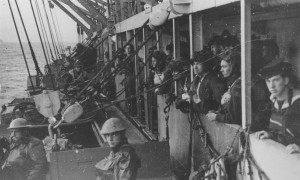
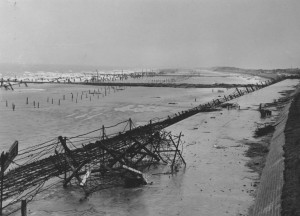
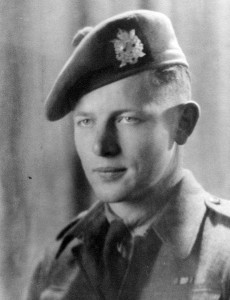
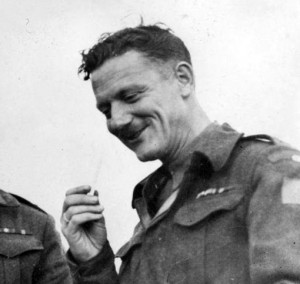
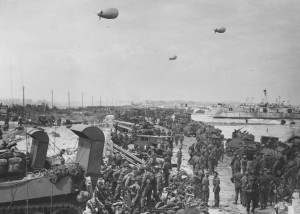
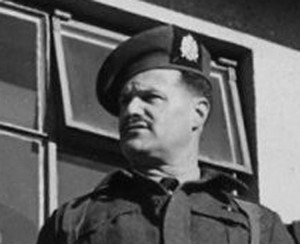
Comments